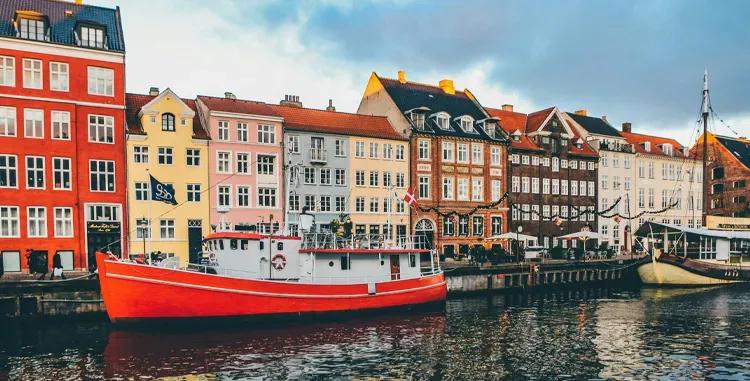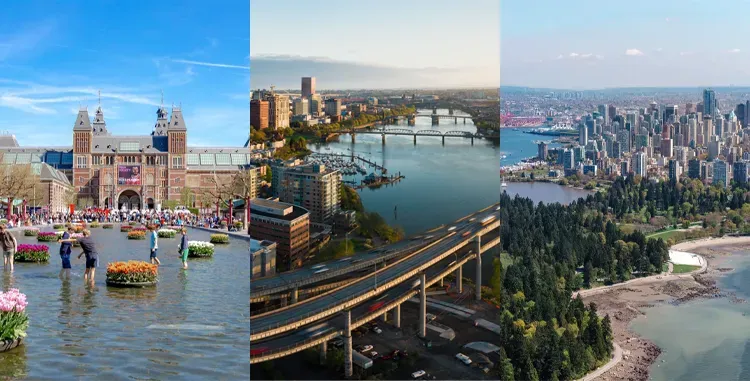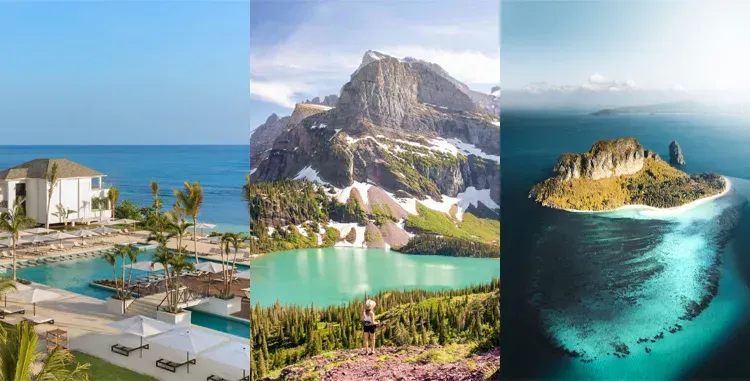Top Eco-Friendly Travel Destinations

Eco-tourism is booming as travelers seek sustainable destinations. Copenhagen aims for carbon neutrality by 2025, with bike-friendly paths and green hotels. Portland and Vancouver prioritize local food and recycling. Amsterdam and Singapore excel in eco-innovations. Eco-lodges like Lapa Rios in Costa Rica and green hotels like 1 Hotel use renewable energy. Zero-waste leaders include San Francisco (80% waste diversion) and the Azores (plastic bans). Plan with PlaninGo: book green accommodations, pack reusables, travel slowly, and track emissions for eco-friendly adventures.
The tourism industry is undergoing a significant shift toward sustainable travel, as conscious travelers seek meaningful experiences that protect the planet's natural resources.
Ecotourism, also known as eco-friendly tourism, has evolved from a niche market to a mainstream movement, with destinations worldwide implementing innovative practices to reduce their environmental impact while supporting local communities.
If your question is, what are the most eco-friendly places to travel to? Steps in the right place; Planningo, as an eco-friendly travel planner, introduces you to some green travel destinations and all their options to help you plan your next trip while caring about the environment and ecosystem.
To begin with, let’s talk about some of the best cities that are recognized around the world for Sustainable travel and tourism:

Best places for eco-friendly travel
Urban sustainable travel destinations lead the charge in environmental innovation, proving that cities can be both vibrant and eco-friendly.
- Copenhagen, Denmark:
Copenhagen is considered the leading green destination. By 2025, the capital aims to achieve carbon neutrality, and thanks to its cycling-friendly measures and green energy sources, it is well on its way. The region’s dedication to sustainable tourism is evident in its wide range of eco-certified accommodations and the use of fresh, locally sourced dining options.
- Portland, Oregon
People know this city for its commitment to the environment and supportive travel habits (sustainable travel). Getting around Darien is easy; it is covered with urban forests, and 90% of the food served at local restaurants comes from nearby farms. Eco-friendly tourism in Portland is evident in the numerous eco-friendly hotels, known as green hotels, and sustainable tour operators.
- Vancouver, Canada
In Vancouver, you can experience elegant cities and stunning landscapes, all within strict limits to protect nature. The city's sustainable tourism efforts involve large-scale recycling, building to green standards, and protecting nearby wild areas. Because Vancouver works to reduce its carbon footprint, it is considered one of the best green tourist destinations.
- Amsterdam, Netherlands,
Amsterdam is well-known for its bike-friendly paths, convenient trams and buses, and environmentally friendly waste management practices. In the city, you can find numerous eco-friendly tourism options and individuals who educate visitors about environmental issues.
- Singapore
Asia’s greenest city status is attributed to its innovative urban design and environmentally friendly technology. Those working to keep the city-state environmentally friendly have established vertical gardens, collected rainwater, and implemented strict rules to protect air and water quality standards.

Top Eco-Lodges and Green Hotels
Accommodation choices significantly impact your carbon footprint, making eco-friendly lodging a crucial component of sustainable travel.
- Luxury eco-lodges combine luxury, comfort, and environmental care. Renewable energy supplies electricity to Lapa Rios Lodge in Costa Rica, supporting efforts to preserve the rainforest and help nearby communities. This site demonstrates that luxury and sustainability can coexist.
- Green hotels in urban settings are incorporating new technologies to minimize their environmental impact. The 1 Hotel chain offers various properties throughout North America, where you’ll find sustainable materials, efficient equipment, and joint projects with nearby organic suppliers. They demonstrate that eco-friendly tourism offers a comfortable experience.
- Eco-resorts in tropical destinations are setting new standards for sustainable travel. These places aim to generate minimal waste, utilize only renewable energy sources, and implement key initiatives to protect coral reefs across Thailand. Visitors can enjoy their stay while seeing firsthand how these efforts help the environment.
- Sustainable glamping locations provide unique accommodation experiences while minimizing environmental impact. They deliver unique stays to solar-powered safari tents in Kenya and charming treehouses in Costa Rica. These accommodations enable guests to appreciate the beauty of nature while also helping to protect the environment.
- Certified green accommodations rely on third-party confirmation to support environmentally friendly tourism efforts. Ensure the places you book are certified by Green Key, LEED, or a nearby environmental office before making a reservation.

Best Destinations for Zero-Waste Travel
Zero-waste travel destinations prioritize reducing waste to benefit the environment and support the local community. These destinations employ various strategies to manage waste effectively, making them excellent choices for environmentally conscious travelers.
For example, More than 80% of waste in San Francisco is kept out of landfills through good recycling and composting efforts. Thanks to effective sustainable tourism plans, it’s easy for tourists to adopt eco-friendly habits.
Another leader in Waste Reduction is:
- Island:
The island has encouraged the development of new, environmentally friendly travel options. Waste reduction efforts in Island destinations like the Azores include banning plastic bags, implementing broad recycling systems, and initiating local production that reduces excess packaging. They showcase effective ways to manage waste in areas outside major cities.
- National Park
National parks are working towards zero waste by offering visitors information and improving their facilities. By installing numerous water refill stations and educating its guests, Yellowstone National Park has stopped issuing plastic bottles to visitors.
- Eco-Resort Excellence:
Many eco-resorts have developed advanced plans to eliminate all waste onsite. Many of Costa Rica’s environmentally friendly lodges operate in a closed loop, converting waste into compost, recycling materials, and producing their own food. Sustainable tourism models demonstrate how the zero-waste concept can be implemented effectively.
It's important to remember that just being aware of eco-friendly travel spots isn't enough. As a traveler, you play a key role in making sustainable choices. This brings us to a significant question: how can you travel in an environmentally friendly way?
Eco-tourism: How to travel responsibly and sustainably?
Successful eco-friendly tourism requires careful planning that considers environmental impact, community benefits, and the quality of personal experience.
You are not alone in this. Plannigo can help you with every detail for planning your travel to these cities, from finding hotel deals to booking a cheap flight to your desired destination.
The good plan includes the following steps (can be simple with us):
Planning Your Sustainable Journey
To find the best ways to support eco-tourism, you should:
- Research destination sustainability practices before booking travel.
Find places to visit that have certified green accommodations, well-established programs to protect the environment, community-based tourist projects, and pick sustainable travel destinations that fit your travel interests and environmental values.
- Book with responsible operators that prioritize community and natural welfare. Find tour companies that hold environmental certifications, maintain local community partnerships, and adhere to transparent sustainability practices. Your travel supports positive social and ecological outcomes, thanks to these eco-friendly tour operators.
- Pack sustainably by bringing items you can use repeatedly; this helps reduce waste on your trip. Reusable water bottles, shopping bags, cooking tools, and toiletry packages are all important. Packing lights reduces the pollution caused by transportation, and eco-friendly packing options minimize waste at the location.
- Travel slowly to maximize destination experiences while minimizing transportation emissions. Spending more time in fewer places reduces your carbon footprint while allowing deeper cultural immersion. Sustainable travel often means choosing quality experiences over quantity of destinations.
- Track your impact using carbon calculators and watch your trash to learn how your trip affects the world. When planning your next trip, use this knowledge to help protect the environment. Many sites for sustainable tourism offer tools for monitoring and mitigating the effects of travel.
Final words:
Traveling in a way that cares for our environment while still having fun is the best approach for the future. Visiting environmentally-friendly sights, using eco-conscious travel methods, and choosing green tourism firms helps keep the planet safe. Every tourism experience offers an opportunity to protect nature, strengthen communities, and preserve cultural heritage for future generations.

Planingo
FAQ
